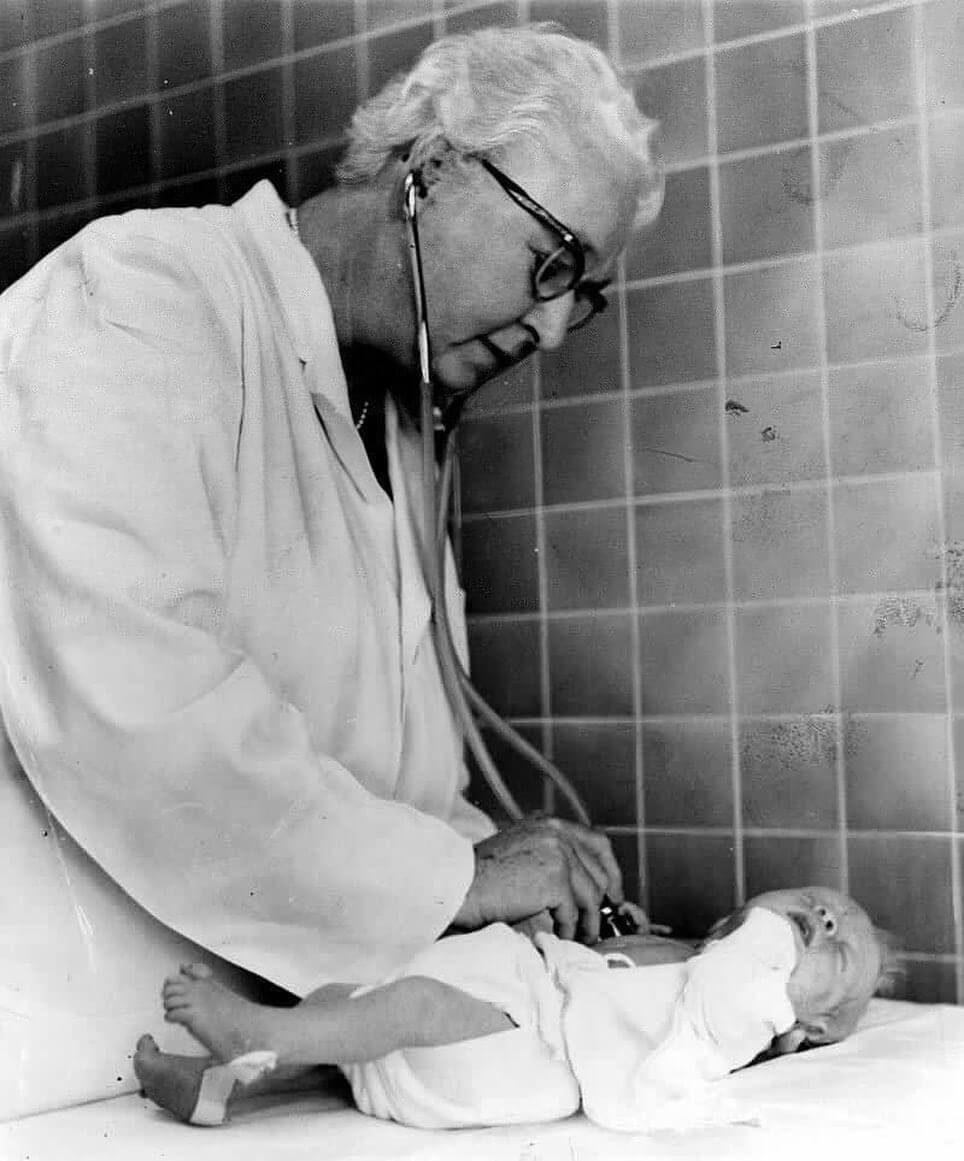The Apgar score is a simple method of assessing a neonate’s well-being at birth. There are five criteria, each of which is allocated a score between zero and two. The assessment is generally performed at one and five minutes after delivery, and may be repeated later if the score remains low. Scores of 7 and above are considered normal, 4-6 are considered to be fairly low, and 3 and below are regarded as critically low.
It was originally developed in 1952 by an anesthesiologist at Columbia University, Virginia Apgar, to address the need for a standardized way to evaluate infants shortly after birth.

Virginia Apgar, the creator of the APGAR score
The APGAR acronym
The acronym “APGAR” can be used as an aide memoir for the five criteria:
- Appearance
- Pulse rate
- Grimace
- Activity
- Respiratory effort
The criteria of the Apgar score are as follows:
| Score of 0 | Score of 1 | Score of 2 | |
|---|---|---|---|
| Appearance (skin colour) | Blue or pale all over | Blue at extremities (acrocyanosis) | No cyanosis Body and extremities pink |
| Pulse rate | Absent | < 100 per minute | > 100 per minute |
| Reflex irritability grimace | No response to stimulation | Grimace on suction or aggressive stimulation | Cry on stimulation |
| Activity | None | Some flexion | Flexed arms and legs that resist extension |
| Respiratory effort | Absent | Weak, irregular, gasping | Strong, robust cry |
Worked example 1:
You attend the unexpected delivery of a baby in one of the cubicles in the Emergency Department. Your consultant assesses the neonate one minute after delivery and informs you that:
- The extremities are blue, but the body is pink
- The heart rate is 110 per minute
- The baby grimaces with aggressive stimulation
- There is some flexion of the limbs
- The baby has weak, irregular gasping on assessment of respiratory effort
Answer: In this example, the neonate’s APGAR score is 5:
- Appearance: blue extremities – 1
- Pulse rate: 90 – 1
- Baby grimaces with aggressive stimulation – 1
- Activity: some flexion – 1
- Respiratory effort – weak, irregular gasping – 1
Worked example 2:
You repeat the APGAR score at five minutes for your consultant and note the following:
- The body and extremities are both pink
- The heart rate is 110 per minute
- The baby cries with stimulation
- There is some flexion of the limbs
- The baby has a strong, robust cry
Answer: In this example, the neonate’s APGAR score is 9:
- Appearance: pink body and extremities – 2
- Pulse rate: 110 – 2
- Baby cries with stimulation – 2
- Activity: some flexion – 1
- Respiratory effort – strong, robust cry – 2
Thank you to the joint editorial team of www.mrcemexamprep.net for this article.







Needed this. Thank you!